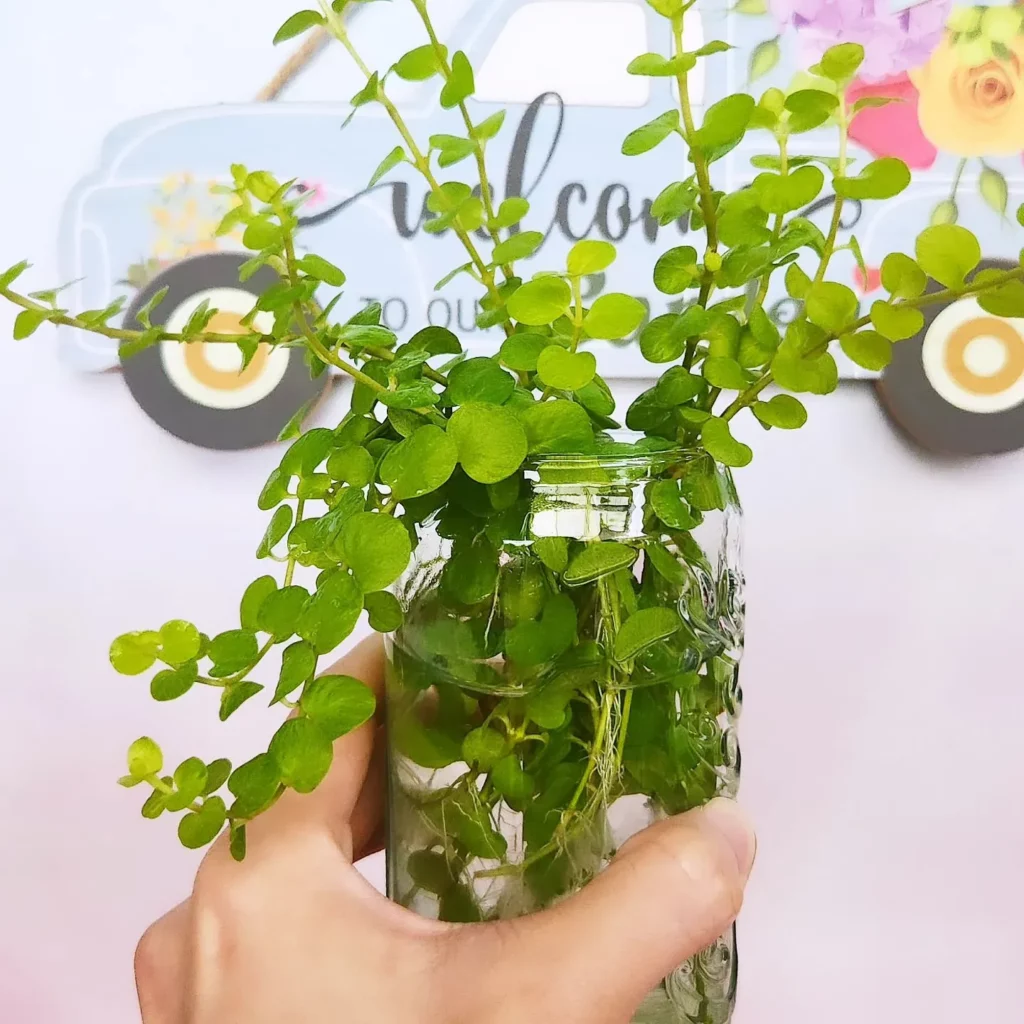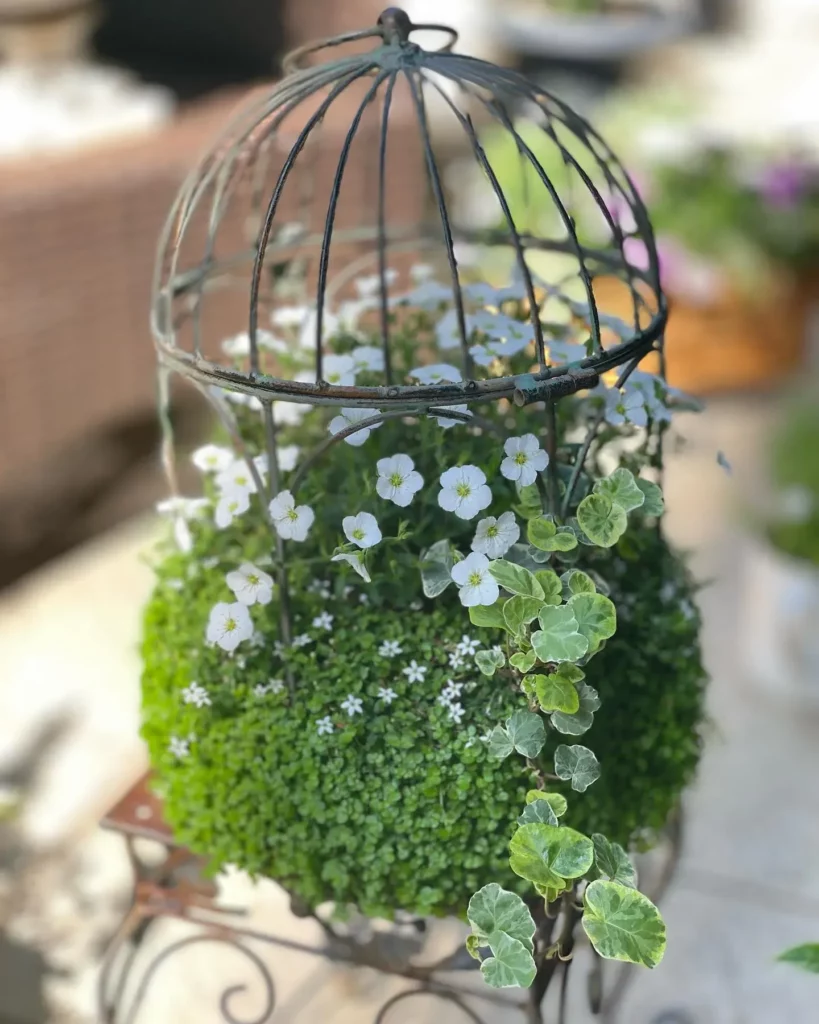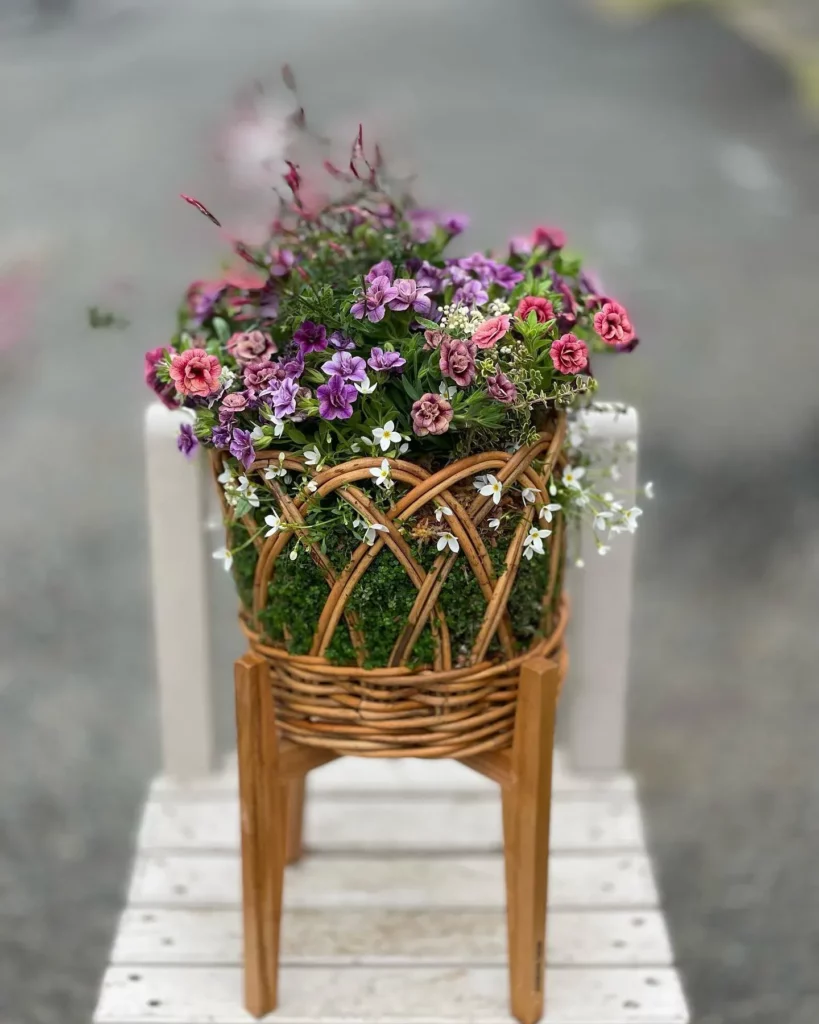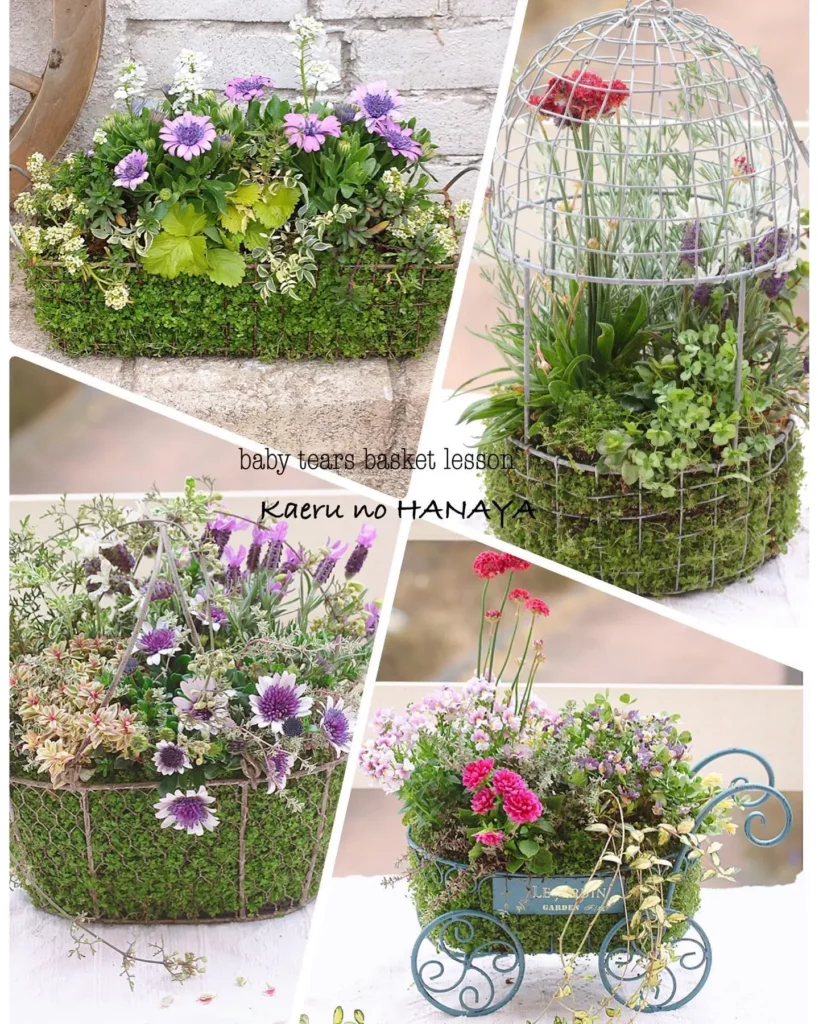The baby tears plant, also known as Soleirolia soleirolii, has a distinct appearance that sets it apart from other plants. This low-growing plant forms a dense mat of tiny leaves, giving it a lush and carpet-like look. Its leaves are small, round, and a vibrant shade of green. The overall effect is reminiscent of moss, which is why it is often used in terrariums and bottle gardens to create a natural and verdant scene.
Appearance of Baby Tears Plant



Unlike some plants that focus on producing vibrant flowers, the baby tears plant is primarily grown for its foliage. As such, it does not have showy blooms, but its abundant and delicate leaves more than make up for it. The foliage provides a calming and soothing aesthetic, making it a popular choice for indoor and outdoor gardens alike.
To maintain the desired appearance and encourage new growth, regular pruning can be beneficial for the baby tears plant. Trimming back any leggy or overgrown stems will help keep the plant compact and bushy. Additionally, pruning can help to control its spread if necessary, making it a versatile addition to various garden settings.
Light Requirements for Baby Tears Plant

Baby tears plants thrive in lower-light conditions and prefer bright, filtered light. They can tolerate partial sun but should be protected from intense direct sunlight, which can scorch the leaves. Indoors, you can easily grow baby tears plants under artificial lights, making them a great choice for indoor gardening. Outdoors, it is best to place them in a shadier location to provide the ideal amount of light for their growth.
If you are growing baby tears plants indoors, you can place them near a window with filtered light, such as a north or east-facing window. This will ensure they receive enough light without being exposed to harsh direct sunrays.
No products found.
Light Requirements:
- Baby tears plants prefer bright, filtered light.
- They can tolerate partial sun but should be protected from intense direct sunlight.
- Indoors, grow them under artificial lights.
- Outdoors, place them in a shadier location.
Watering the Baby Tears Plant



Baby tears plants are thirsty plants and require regular watering to keep the soil moist and their foliage lush. It is crucial not to let the soil dry out completely, as this can cause the plant to wilt. To care for your baby tears plant:
- Water the plant consistently, ensuring that the soil remains moist but not waterlogged.
- Check the soil regularly by gently inserting your finger into the soil up to the first knuckle. If it feels dry, it’s time to water.
- Use room temperature water to avoid shocking the plant’s roots.
- Avoid overwatering and allowing the roots to sit in standing water, as this can lead to root rot.
- Consider using a well-draining potting mix to help prevent waterlogged soil.
- Monitor the plant closely during hot summer months as it may require more frequent watering.
Fertilizing the Baby Tears Plant

Baby tears plants are known for their lush green foliage. To ensure that your baby tears plant stays healthy and vibrant, regular fertilization is essential. By supplying the plant with the right nutrients, you can promote optimal growth and maintain its dense appearance.
When it comes to fertilizing your baby tears plant, a balanced plant fertilizer is recommended. This type of fertilizer contains a mix of essential macro and micronutrients that the plant needs for healthy foliage development.
During the active growing season, which is typically in the spring and summer months, you should fertilize your baby tears plant every two weeks. This frequent feeding schedule provides the plant with a continuous supply of nutrients for robust growth.
Feeding Tips for Baby Tears Plant:
- Choose a liquid fertilizer that is easy to apply to the plant’s foliage. Liquid fertilizers are especially convenient when the soil is not visible due to the dense growth of the baby tears plant.
- Follow the instructions on the fertilizer packaging to determine the correct dilution ratio. It is important to avoid over-fertilization, as this can lead to nutrient burn and damage the plant.
- Apply the diluted fertilizer to the plant, ensuring that it reaches the leaves and stems. This will allow the plant to absorb the nutrients effectively.
Potting and Repotting the Baby Tears Plant



When it comes to potting your baby tears plant, you can use a standard potting mix that is well-draining. The plant adapts well to containers and can thrive in various settings such as hanging baskets or terrariums. It’s important to handle the plant with care during repotting to avoid damaging its delicate stems.
If you notice that the roots of your baby tears plant have outgrown their current container or it has been around 2 years since the last repotting, it’s time to consider repotting. Choose a larger pot that allows for the roots to spread out and provide ample space for growth.
During the repotting process, ensure that you use well-draining soil to prevent waterlogging and promote healthy root development. This will help prevent the risk of root rot, which can be detrimental to the plant’s overall health.
No products found.
Propagation of the Baby Tears Plant

Baby tears plants are a joy to propagate and can be easily done through division or stem cuttings. This allows you to expand your collection or share the beauty of these plants with others. Here are two methods to propagate your baby tears plant:
1. Propagation by Division
Division involves separating a section of stems with soil and roots from the parent plant and replanting it in moist, well-draining potting soil. Here’s how to do it:
- Select a healthy, mature baby tears plant with well-established stems and roots.
- Gently remove the plant from its pot, taking care not to damage the fragile stems.
- Locate a section of the plant where stems and roots can be separated from the main clump.
- Using clean gardening shears or a sharp knife, carefully divide the stems and roots to create individual sections.
- Replant each section in its own pot or desired location, making sure to cover the roots with moist potting soil.
- Water the newly divided plants thoroughly and place them in a location with bright, filtered light.
No products found.
2. Propagation by Stem Cuttings
Stem cuttings are another effective method to propagate baby tears plants. Here’s how to do it:
- Select a healthy, non-flowering stem from the parent plant.
- Using clean gardening shears or a sharp knife, cut a 2-3 inch (5-7.5 cm) section just below a node, which is the point where the leaf attaches to the stem.
- Remove any leaves from the bottom of the cutting, leaving a few leaves at the top intact.
- Dip the cut end of the stem into rooting hormone powder to promote root development (optional).
- Prepare a small pot with moist, well-draining potting medium.
- Make a small hole in the potting medium with a pencil or your finger and insert the cutting.
- Gently firm the potting medium around the cutting to ensure good contact.
- Place the pot in a location with bright, indirect light, and cover it with a plastic bag or a clear plastic dome to create a greenhouse effect.
Growth and Development of the Baby Tears Plant
Baby tears plants have a vigorous growth habit and can quickly spread to create a lush and vibrant display. To ensure optimal growth, it is important to provide them with the right conditions and care.
Moist, well-drained soil is essential for the healthy development of baby tears plants. They prefer partial to full shade, making them an excellent choice for indoor gardening or areas with limited sunlight. In warm climates, these plants remain evergreen throughout the year, adding a touch of greenery to your indoor space. However, in colder zones, they may die back during winter and reappear in spring, showcasing the resilience of these plants.
Baby tears plants can tolerate light frost, but they may not survive freezing temperatures. It is advisable to bring them indoors or provide protection during extreme cold.
Regular pruning and maintenance are key to keeping baby tears plants in bounds and promoting healthy growth. Here are a few tips to help you maintain your baby tears plants:
- Trim the overgrown portions regularly to maintain the desired shape and prevent the plant from becoming unruly.
- Remove any yellow or brown leaves to maintain the plant’s overall appearance and health.
- Regularly check for signs of pests or diseases and take appropriate action if necessary.
- Monitor the soil moisture levels and ensure that the plants receive adequate water, being careful not to overwater and cause root rot.
Pests and Diseases of the Baby Tears Plant
When it comes to pests and diseases, baby tears plants are generally hardy and resistant when grown outdoors. However, indoor plants can sometimes fall prey to common houseplant pests such as aphids, mites, and mealybugs.
To prevent these issues, it’s important to maintain good air circulation around your baby tears plant. This can be achieved by placing it in a well-ventilated area and avoiding overcrowding with other plants. Regularly dusting the leaves can also help keep pests at bay.
One of the common problems that baby tears plants face is overwatering, which can lead to root rot. To avoid this, it is crucial to monitor the soil moisture and ensure that it is well-drained. Baby tears plants thrive in moist conditions but should not be left sitting in water for prolonged periods.
Preventing Pests and Diseases:
- Place your baby tears plant in a well-ventilated area with good air circulation.
- Regularly dust the leaves to deter pests.
- Avoid overwatering and ensure the soil is well-drained.
Baby Tears Plant in Different Varieties
Baby tears plants, also known as Soleirolia soleirolii, offer a variety of choices when it comes to their visual appeal. These charming plants come in different varieties, each with its own unique characteristics. Here are a few popular types of baby tears plant:
- Soleirolia soleirolii ‘Aurea’: This variety features golden foliage, adding a touch of warmth and brightness to your indoor or outdoor space.
- ‘Golden Queen’: With its yellowish leaf margins, this variety offers a subtle yet distinctive look, perfect for creating visual interest in your garden.
- ‘Silver Queen’: If you prefer a more muted color palette, this variety with its silver-gray foliage is an excellent choice. It adds an elegant touch to any setting.
- ‘Variegata’: For those who appreciate a splash of color, the variegated baby tears plant offers silverish leaves with beautiful variegation, creating a striking display.
Tips for Care and Common Problems
When it comes to caring for your baby tears plant, providing the right light, water, and humidity conditions is crucial for its well-being. The first step is to ensure regular watering to keep the soil moist. Baby tears plants are quite thirsty, so don’t let the soil dry out completely. If you notice wilting, it’s a sign that your plant needs water.
Another important factor is light exposure. While baby tears plants can tolerate some direct sunlight, intense sunlight can lead to brown leaves. It’s best to place your plant in a location that receives bright, filtered light or partial shade. If you’re growing it indoors, consider placing it near a window with indirect sunlight or use artificial lights.
High humidity is essential for the healthy growth of baby tears plants. These moisture-loving plants thrive in humid environments, so mist the leaves regularly or use a humidifier. However, be cautious not to overwater, as this can cause root rot. Ensure proper drainage to prevent water from pooling at the bottom of the pot.
Lastly, pruning and monitoring for pests and diseases are vital for maintaining a healthy baby tears plant. Regularly trim any overgrown or damaged stems to encourage growth and maintain its shape. Keep an eye out for common houseplant pests like aphids, mites, and mealybugs. If you notice any signs of infestation, take appropriate measures to eliminate them.
FAQ
How do I grow a baby tears plant indoors?
To grow a baby tears plant indoors, place it in a location with bright, filtered light. Keep the soil moist but well-drained, and fertilize it every two weeks during the spring and summer months. Regularly prune and monitor for pests and diseases.
What does a baby tears plant look like?
A baby tears plant has a low-growing habit and forms a dense mat of tiny, round, green leaves. It has a moss-like appearance and is often used in terrariums and bottle gardens.
What light requirements does a baby tears plant have?
Baby tears plants thrive in lower-light conditions and prefer bright, filtered light. They can tolerate partial sun but should be protected from intense direct sunlight, which can scorch the leaves.
How often should I water a baby tears plant?
Baby tears plants are thirsty plants and should never be allowed to dry out. They require regular, consistent watering to keep the soil moist. If the plant starts to wilt, it is a sign that it needs water. However, it is important not to overwater and allow the roots to sit in water, as this can lead to root rot.
How should I fertilize a baby tears plant?
Baby tears plants benefit from regular fertilization to keep their foliage bright green and dense. A balanced plant fertilizer can be applied every two weeks during the spring and summer months. It is important not to over-fertilize, as this can lead to nutrient burn.
How do I pot and repot a baby tears plant?
When potting a baby tears plant, use a standard potting mix and a well-draining pot. The plant can be grown in hanging baskets or terrariums. When repotting, be cautious of the fragile stems to avoid damaging the plant. Repot every 2 years or when the roots outgrow the container.
How can I propagate a baby tears plant?
Baby tears plants can be propagated through division or stem cuttings. Division involves separating a section of stems with soil and roots and replanting it in moist, well-draining potting soil. Stem cuttings can be taken by cutting healthy stems and planting them in potting medium with rooting hormone.
How does a baby tears plant grow and develop?
Baby tears plants have a vigorous growth habit and spread quickly in the right conditions. They grow best in moist, well-drained soil and prefer a partial to full shade spot. In warm climates, they remain evergreen, but in colder zones, they will die back and reappear in spring.
What pests and diseases should I watch out for with a baby tears plant?
Baby tears plants are generally pest and disease resistant when grown outdoors. Indoors, they may be affected by common houseplant pests such as aphids, mites, and mealybugs. Root rot can be a problem if the plant is overwatered. It is important to monitor the soil moisture and ensure it is well-drained.
What are the different varieties of baby tears plants?
Baby tears plants come in different varieties, including Soleirolia soleirolii ‘Aurea’ with golden foliage, ‘Golden Queen’ with yellowish leaf margins, ‘Silver Queen’ with silver-gray foliage, and ‘Variegata’ with variegated, silverish leaves. These varieties offer different color options for added visual interest.
How do I care for a baby tears plant and what are common problems?
Taking care of baby tears plants involves providing them with the right light, water, and humidity conditions. Regular watering, adequate light exposure, and high humidity are key factors for their success. Common problems that may arise include wilting due to insufficient water, brown leaves from intense sunlight, and root rot from overwatering. Pruning and monitoring for pests and diseases are also important aspects of care.




